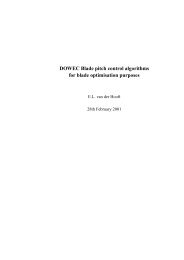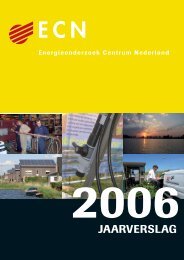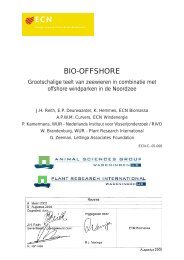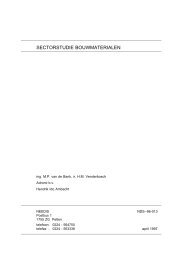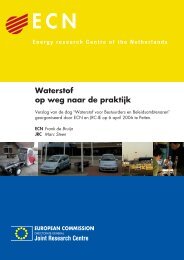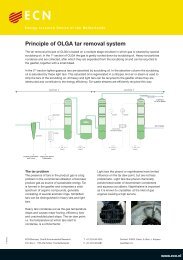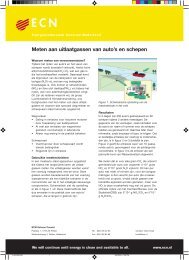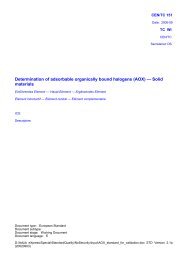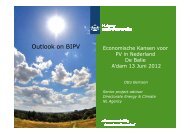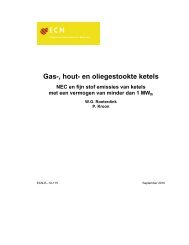PDF format (503 kB) - ECN
PDF format (503 kB) - ECN
PDF format (503 kB) - ECN
You also want an ePaper? Increase the reach of your titles
YUMPU automatically turns print PDFs into web optimized ePapers that Google loves.
The table allows an overall view<br />
on the influence of the chosen<br />
scenario on the CO2 emissions.<br />
The emissions of primary production<br />
routes decrease strongly<br />
with CO2 removal. COREX is<br />
the most sensitive, also with regard<br />
to the electricity emission<br />
factor. The table confirms the<br />
role of CO2 removal as a key<br />
technology for steel production<br />
with low CO2 emissions.<br />
Though the influence of maximum<br />
scrap addition is clear, it<br />
does not change the ranking of<br />
the production routes with regard<br />
to emissions. Maximizing<br />
scrap addition reduces the emissions<br />
of the primary routes by<br />
about 20 to 30 %, as table 3<br />
shows.<br />
With regard to costs, COREX again is very sensitive to CO2 removal. The CCF route always is cheapest,<br />
though its lead diminishes in the removal scenarios. High scrap addition results in slight increases in costs in<br />
the cheap production routes, and<br />
decreases in the more expensive<br />
routes and, in some cases, in<br />
routes which have become more<br />
expensive by CO2 removal. In<br />
all scenarios the electricity price<br />
is the same, however, a higher<br />
electricity price in the scenarios<br />
with a low electricity emission<br />
factor is very likely and would<br />
harm the competitiveness of the<br />
routes using EAF and of the<br />
routes with high CO2 removal<br />
rates, such as COREX. On the<br />
other hand, profits from excess<br />
energy production would increase.<br />
tonne CO2/tonne liquid steel<br />
1<br />
0.8<br />
0.6<br />
0.4<br />
0.2<br />
0<br />
bf 150 bf 250 corex ccf midrex circofer ac eaf dc eaf<br />
Production route<br />
tonne CO2/tonne liquid steel<br />
1<br />
0.8<br />
0.6<br />
0.4<br />
0.2<br />
0<br />
CO2 emissions of steel production<br />
0.1 t CO2/GJe, low scrap<br />
CO2 emissions of steel production<br />
0 t CO2/GJe, low scrap<br />
bf 150 bf 250 corex ccf midrex circofer ac eaf dc eaf<br />
Production route



